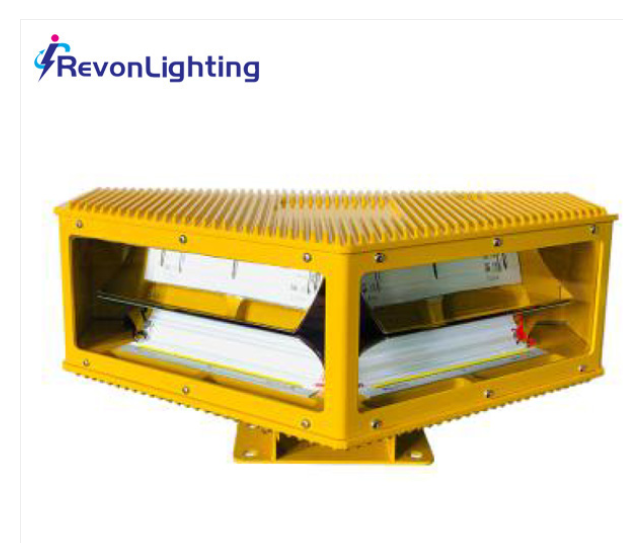High intensity obstruction lights (HIOLs) play a critical role in modern aviation safety protocols by ensuring the visibility of tall structures to aircraft, especially during periods of low visibility such as nighttime or adverse weather conditions. These lights, also known as aircraft warning lights, are essential for alerting pilots to the presence of obstacles that could pose a hazard to flight paths. This article explores the significance, features, technological advancements, and regulatory standards associated with high intensity obstruction lights, highlighting their indispensable role in maintaining aviation safety.
Importance of High Intensity Obstruction Light
High intensity obstruction lights are primarily installed on tall structures such as communication towers, wind turbines, high-rise buildings, bridges, and industrial chimneys. Their main purpose is to make these structures visible to pilots, enabling them to safely navigate around potential obstacles. This visibility is crucial for preventing collisions and ensuring the smooth flow of air traffic, particularly in airspace corridors near urban areas or where multiple tall structures exist.
During nighttime flights or in low visibility conditions caused by fog, rain, or snow, these lights provide essential visual cues to pilots regarding the location, height, and extent of obstacles. This information allows pilots to adjust their flight paths accordingly, minimizing the risk of accidents and enhancing overall aviation safety.

Key Features of High Intensity Obstruction Lights
Brightness and Visibility: HIOLs are characterized by their high brightness, which ensures they are visible over long distances and in various weather conditions. They emit either a steady or flashing light, depending on regulatory requirements and the specific characteristics of the structure they are installed on.
Color Options: Typically, these lights are available in red and white colors. Red lights are used for structures exceeding a certain height, as mandated by aviation regulations, while white lights may be used for shorter structures or where less stringent visibility requirements apply.
Technological Advancements: Advances in lighting technology, particularly the adoption of Light Emitting Diodes (LEDs), have significantly improved the efficiency and reliability of HIOLs. LEDs offer benefits such as lower energy consumption, longer lifespan, and better performance in adverse weather conditions compared to traditional lighting technologies like incandescent bulbs. Modern HIOLs often incorporate advanced monitoring and control systems, allowing for remote management and real-time status monitoring. This capability enables operators to promptly detect and address any malfunctions or failures, thereby ensuring continuous operation and compliance with safety regulations.
| high intensity obstruction light | 20W cd |
| 13 | 2w cd |
| 14 | 0.2W cd |
Regulatory Standards
The installation and operation of high intensity obstruction lights are governed by strict regulatory standards set forth by aviation authorities such as the Federal Aviation Administration (FAA) in the United States and the International Civil Aviation Organization (ICAO) globally. These standards specify parameters including light intensity, flash rate, color, and placement based on the height and location of the structure.
Compliance with these regulations is essential to maintain a safe and standardized approach to aviation safety worldwide. It ensures that pilots receive consistent and reliable visual signals regarding the presence of obstacles, thereby minimizing the risk of accidents and maintaining the integrity of the airspace system.
Advancements in Technology
Recent technological advancements have further enhanced the capabilities of HIOLs. Modern lights are equipped with sophisticated monitoring and control systems that allow for remote diagnostics and maintenance. This proactive approach to maintenance helps prevent unexpected failures and ensures that the lights operate at optimal efficiency at all times.
Furthermore, the transition to LED technology has not only improved the performance of HIOLs but also reduced operational costs due to their lower energy consumption and decreased maintenance requirements. These advancements contribute to the overall reliability and effectiveness of obstruction lighting systems, supporting safer skies for aviation operations worldwide.
Conclusion
High intensity obstruction lights are indispensable safety devices that significantly contribute to aviation safety by enhancing the visibility of tall structures to aircraft. By providing clear visual signals to pilots, these lights help prevent collisions and ensure the safe navigation of airspace, particularly in challenging visibility conditions.
As technology continues to evolve, HIOLs are expected to become even more efficient, reliable, and cost-effective. The ongoing development of monitoring systems and the adoption of LED technology are likely to further improve the performance and sustainability of obstruction lighting systems.
In conclusion, the implementation and maintenance of high intensity obstruction lights in accordance with regulatory guidelines are essential to safeguarding the integrity of the airspace system and protecting the safety of air travelers worldwide. These lights remain a cornerstone of modern aviation safety protocols, ensuring that pilots can navigate with confidence even in the presence of tall structures and adverse weather conditions.